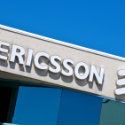
Ericsson has landed a potentially important network deal with Vodafone's UK business that could prepare the ground for an early launch of 5G technology and cement the existing relationship between the two companies.
The agreement provides some welcome news for the Swedish equipment supplier, which is trying to improve profitability at its main networks business in the face of a market downturn and aggressive competition from China's Huawei Technologies Co. Ltd.
In a first step, the Swedish vendor, which is currently Vodafone UK's main supplier of radio access network equipment, will help the telco upgrade its 4G networks in London and southern England using massive MIMO and carrier aggregation technologies.
Massive MIMO boosts performance by adding many more antennas to the wireless transmitter and receiver devices, while carrier aggregation brings together two or more spectrum channels -- sometimes from different frequency bands -- to increase connection speeds.
Ericsson AB (Nasdaq: ERIC) says it has also been chosen to provide 5G radio technology to Vodafone UK and will contribute 5G expertise in several areas.
Those include use of mid-band spectrum in the 3.5GHz range as well as very high, or millimeter wave, frequency bands.
Because wireless signals travel further in lower frequency bands, operators are expected to use the 3.5GHz band for coverage rather than capacity. With millimeter wave spectrum, by contrast, they will probably target hotspots such as shopping centers or airports where there is demand for high-speed connectivity. (See The Growing Pains of 5G.)
Later this year, UK regulatory authority Ofcom is due to hold an auction of 3.5GHz spectrum and begin a consultation process for the release of airwaves in the very high 26GHz band.
Ericsson and Vodafone are also investigating the use of both non-standalone and standalone versions of 5G technology. The former means running 5G new radio technology in conjunction with an existing 4G network, while standalone includes a next-generation core as well as the new radio standard.
The non-standalone version could arrive in the market in 2019, or even in late 2018, with the 3rd Generation Partnership Project (3GPP) set to lock down its new radio specifications at the end of this year. (See 3GPP Approves Plans to Fast Track 5G NR and AT&T Expects 5G in Late 2018 or Early '19.)
Ericsson's press release also refers to collaboration on distributed cloud and network slicing technologies, which could support the sale of 5G services in the enterprise sector.
With a distributed cloud network, operators would be able to reduce network latency, or the delay that occurs when sending signals over a data network. This capability could have particular value in the market for connected cars and has also attracted interested from healthcare specialists, who believe it could support the introduction of remote surgery. (See Does Ericsson's 5G-for-Healthcare Biz Case Need Surgery?)
5G draws nearer
Gabriel Brown, a principal analyst with the Heavy Reading market-research group, welcomed the news from both a technology and a publicity perspective.
"Vodafone has made a lot of progress in its UK network over the last couple of years, but has been pretty badly 'scooped' by [rival mobile operator] EE in public perception terms," he says. "It hasn't pushed its performance and technology story as strongly as it should have done and this kind of announcement helps address that."
Brown also said the deal could lead to the introduction of a 5G new radio service by Vodafone in the "not-too-distant future."
"Vodafone is supportive of the idea of deploying 5G new radio in mid-band spectrum on the existing cell site grid, initially in non-standalone mode, which suggests an aggressive launch schedule," he explains. "It's interesting that the release also makes mention of standalone mode and network slicing, which are capabilities needed to take 5G beyond an enhanced broadband play into new markets and value chains."
Want to learn more about how LTE-A Pro and Gigabit LTE will impact the 5G market? Join us in San Francisco for LTE Advanced Pro and Gigabit LTE: The Path to 5G event -- a free breakfast collocated at Mobile World Congress Americas with a keynote address by Sprint's COO Günther Ottendorfer.
Ericsson expects its main addressable market to shrink at a rate of between 2% and 6% in 2017 and hopes the rollout of 5G networks will lead to improvements in subsequent fiscal years.
It has been touting the attractions of a new radio platform -- simply branded Ericsson Radio System (ERS) -- seen as a critical step on the journey to 5G. (See Loss-Making Ericsson Still Short on Vision.)
Designed to support easier, software-based network upgrades in the future, ERS accounted for about 15% of total deliveries of radio units in 2016, but Ericsson believes the figure will hit 50% this year.
"ERS is a key enabler to bring down the cost of sales and push gross margins up," said Carl Mellander, Ericsson's chief financial officer, in January. "It will have a positive impact on the service side because of the serviceability of the suite."
Ericsson's sales fell by 11% on a year-on-year basis in the first quarter, to about 46.4 billion Swedish krona ($5.3 billion, at today's exchange rate), and by 16% in constant currency terms. The company also swung from a net profit of SEK2.1 billion ($240 million) to a loss of SEK10.9 billion ($1.3 billion) over the same period.
Last week it was reported to have hired two banks to explore the sale of media assets, having previously hinted at plans to flog the loss-making media business. (See Ericsson Moves Closer to Media Business Sale – Report.)
— Iain Morris, 

 , News Editor, Light Reading
, News Editor, Light Reading
Read more about:
EuropeAbout the Author(s)
You May Also Like











